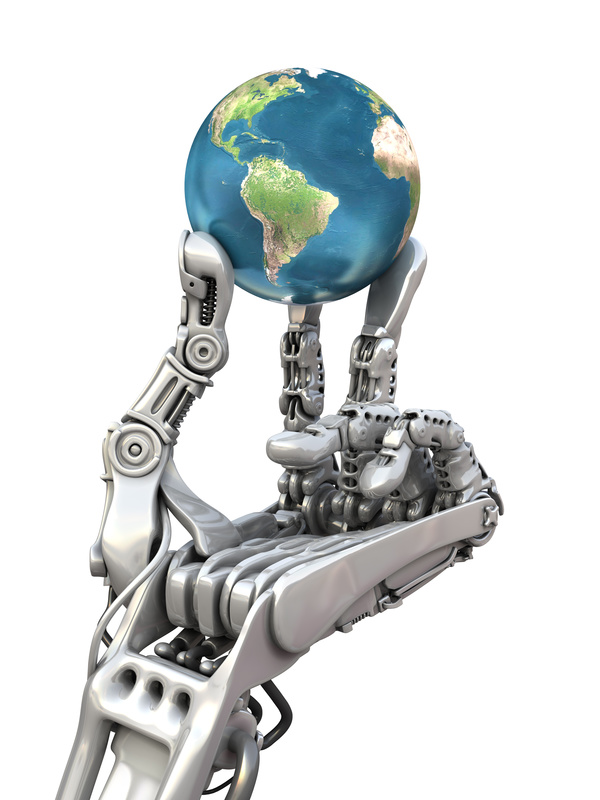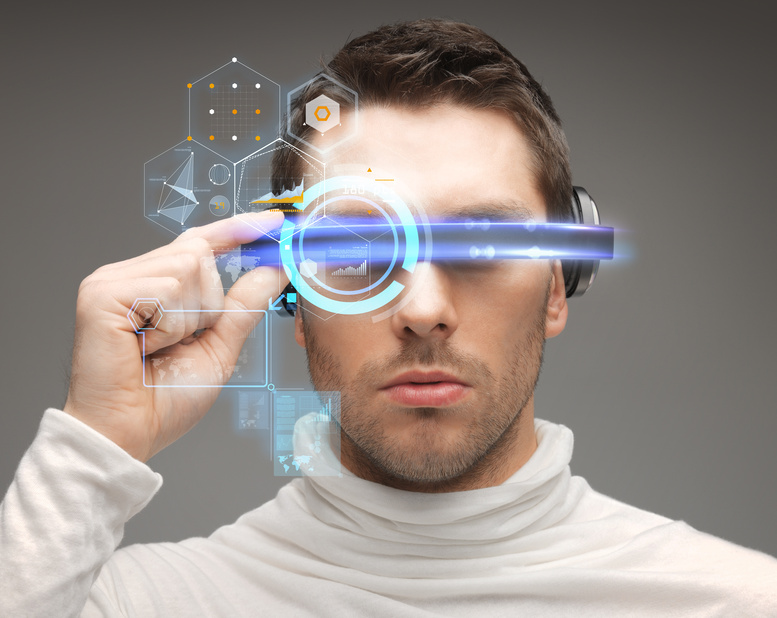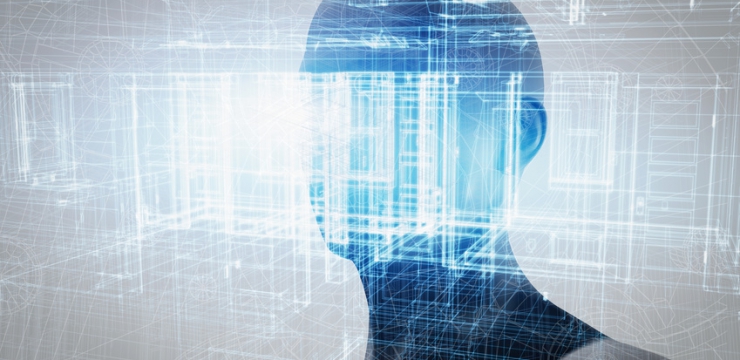When talking about innovations, you often hear terms like digitalization, IoT (internet of things) or artificial intelligence. I often read about the term “singularity” in the same context. But what does it really mean? What influence can singularity have on our daily lives? Is it only science fiction or really close future?
The relevance of digitalization as well as artificial intelligence in the context of innovation can be seen in blog articles, in which we report about digital trends, where we beam ourselves into the year 2020, in tips & tricks for digital transformation for companies or in 10 areas, where artificial intelligence exists yet.
All of those innovations and developments have in common to be building blocks for singularity, respectively technological singularity.
But: What exactly is Singularity?
This term derives from futurology and describes a specific point in the future, when machines can learn on their own with artificial intelligences and thus can develop on their own.
The basis for this theory is the observation, that not only technology, but also science are not developing linearly, but exponentially. Thus, further progress will also increase exponentially.
The mathematician John von Neumann used the term for the first time in the 1950s in connection with technological intelligence. In the early 1990s, the mathematician and science fiction author Vernor Vinge published a book about technological singularity. In accordance to him, this technological progress will create a superhuman intelligence that will eventually lead to an end of humanity.
Probably the most famous influencer of the singularity theory is Ray Kurzweil – author, inventor and director of engineering at Google. Kurzweil thinks about singularity as “the point of time, when technological progress happens so fast and intensive that it changes human life irrevocable.” Furthermore, he thinks that it will become possible to change humans’ own biological structure that will eventually lead to a merger or human and machine. According to Kurzweil, it will be possible to recreate the human brain and all its activities within the next 30 years. In addition, this would offer the possibility to save one’s knowledge in machines and thus being immortal.
Apart from artificial intelligence, brain-to-computer interfaces, genetic engineering and nanotechnology are further technologies that can eventually lead to technological singularity.

What happens after Singularity?
What happens after the point of singularity is unknown and offers space for possible scenarios that are probably already known through science fiction movies. An example would be the fight between humans vs. machines, a two-class society or a merger of humans and machines. As another alternative, Cloud Science describes the coexistence of humans and machines that get implemented a “human-friendly” software as well as the exit of singularity. Therefore, humans would recognize the danger of singularity and all of its technological innovations and would shut them off – including the internet.
It’s pretty hard to believe that this will be a real alternative. Furthermore, the the danger of technological revolution got further sharpened by leading scientists and masterminds Stephan Hawking or Bill Gates.
Also Ray Kurzweil describes those dangers and he is sensible that something good can be used for bad intentions, for example the programming of a biotechnological created virus. However, he expresses to sharpen the consciousness for dangers, but not to panic.
Those risks come hand in hand with chances. Probably the most attractive advantage could be immortality – for example through wealth optimization, as well as no work anymore, since machines will do all kind of works. There is a chance that the world can become a saver place to live in. This sounds too good, since we have to ask:

How close is Singularity?
Ray Kurzweil thinks that the point of time for singularity could be 2045. However, there are bad foresights, as the recent example of Microsoft’s chat-bot Tay shows: Microsoft connected Tay’s artificial intelligence to social media systems. The goal was to learn about linguistic of teens by interaction. The experiment failed, since Tay eventually posted racist and sexist posts, influenced by the interaction. Microsoft shut-off Tay and apologized for his posts.
This is an example that not only shows the danger of such a technology, but also sharpens the consciousness and expresses that it will still take some time and work to reach singularity.
However, scientists and economists are continuously working on technological solutions and innovations that will further develop singularity. I will outline the current state of the most exciting applications and developments in the second part.
But for now: What do you thin, what hurdles will humanity have to overcome and what chances and risks will singularity bring? I am looking forward to your comments!
Bibliography (German, since this article was published in German initially):
Beuth, P, Twitter-Nutzer machen Chatbot zur Rassistin, Zeit online, 24.03.2016, http://www.zeit.de/digital/internet/2016-03/microsoft-tay-chatbot-twitter-rassistisch
Kling, B., Chat-Bot Tay: Microsoft entschuldigt sich, ZDnet, 28.03.2016, http://www.zdnet.de/88264465/chat-bot-tay-microsoft-entschuldigt-sich/
Klingler, W./ Grassegger, H., Schwarzenegger hatte Unrecht, Zeit online, 29.03.2015, http://www.zeit.de/wirtschaft/2015-03/kuenstliche-intelligenz-mensch-maschine
Kurzweil, R., Technologische Singularität von Ray Kurzweil erklärt, youtube, 12.08.2010, https://www.youtube.com/watch?v=OV9cRAvft_U
Kurzweil, R., Der Mensch, Version 2.0. Spektrum der Wissenschaft, Januar 2006. http://www.spektrum.de/alias/pdf/sdw-06-01-s101-pdf/833247?file
Kurzweil, R., The Singularity Is Near. When Humans Transcend Biology. Viking, New York 2005.
Newitz, A., What Is The Singularity And Will You Live To See It?, Io9, 05.10.2010, http://io9.gizmodo.com/5534848/what-is-the-singularity-and-will-you-live-to-see-it
O.V., Rassistischer Chat-Roboter: Mit falschen Werten bombadiert, Süddeutsche Zeitung, 03.04.2016, http://www.sueddeutsche.de/digital/microsoft-programm-tay-rassistischer-chat-roboter-mit-falschen-werten-bombardiert-1.2928421
O.V., Ist künstliche Intelligenz schon im Jahr 2045 möglich?, CanCom, 09.12.2014, http://www.cancom.info/2014/12/ist-kunstliche-intelligenz-schon-im-jahr-2045-moglich/
O.V., Singularität: Ist die Ära der Menschheit zu Ende?, Futurezone, 11.04.2014, http://futurezone.at/science/singularitaet-ist-die-aera-der-menschen-zu-ende/24.565.454
O.V., Wie wird die technologische Singularität unser Leben verändern?, Cloudscience, http://www.cloudscience.de/2015/02/07/wie-wird-die-technologische-singularität-unser-leben-verändern/.
Settembrini di Novetre, M., Erweckungsphantasten gegen Maschinenstürmer, Frankfurter Allgemeine Zeitung, 07.06.2012, http://blogs.faz.net/deus/2012/06/07/erweckungsphantasten-gegen-maschinenstuermer-810/
Vernor, V., The Coming Technological Singularity: How to Survive in the Post-Human Era (in Proceedings: VISION-21 Symposium March 30-31, 1993; http://www-rohan.sdsu.edu/faculty/vinge/misc/singularity.html
Westerheide, F. J. G., Die Zukunft steht vor deiner Haustür – in diesen 5 Märkten wird es passieren, bootstrapping.me, 01.04.2015, http://bootstrapping.me/die-maerkte-der-zukunft/

